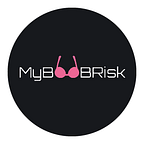Contact Sports, Damaged Tissue, and Early Development of Breast Cancer
The popularity of female sports such as football and rugby has witnessed remarkable growth over the last decade. Since female athletes are now competing at such a high level, sports-related injuries are continually on the rise. In fact, it is estimated that over half of female athletes will receive some level of breast injury during their sporting career.
The most common breast injuries
Female breasts are functional exocrine glands that secrete the proteins present in breast milk, amongst other things. Located in the pectoral region of the chest, the skin surface, a thin layer of fat beneath it, and a layer of stringy connective tissue that connects to the breast volume and surrounds the circumference of the breast outline are all that protect the breasts. For this reason, it is hardly surprising that females involved in contact sports at the highest level will suffer some form of breast injury during their sporting career.
The most common breast injuries are generally those that involve some form of direct trauma to the breast, such as direct contact from an opponent’s hand or elbow during a tackle or with the ground after a fall. There is also increasing evidence to suggest that breast injuries are extremely common among females who participate in extreme combat sports such as boxing and martial arts.
Only seatbelt-related injuries to go on...
While breast injuries are common, there is very little information regarding breast injury treatment. In fact, most of the medical protocols surrounding breast injuries are the result of research into the treatment of seatbelt-related injuries to the breast tissue, which are often the result of traffic accidents.
Indeed, the effects of seatbelt injuries are, in general, very similar to breast injury trauma from contact sports, such as contusions, bruising, hematomas, swelling, discomfort, and pain. After a seat belt-related breast injury, it is typically recommended that the woman have a physical breast exam every 3–6 months, as well as yearly mammograms and breast examinations.
Sustained damage to the breast tissue
When an area of fatty breast tissue sustains damage and eventually develops scar tissue, fat necrosis, a benign breast condition, can result. In the breast, fat necrosis presents as a physical lump, which is essentially irreparably damaged tissue resembling a breast tumour. Similarly, an oil cyst can occur when breast cells release oily substances during breast trauma, which can also create a lump of cells.
Although it is generally assumed that such breast changes do not increase the risk of breast cancer, fat necrosis can be confusing on a mammogram with malignancy. It is therefore essential that a radiologist can distinguish between scar tissue, fat necrosis, and a potential cancerous tumour. In this regard, it is very important that a detailed history of breast trauma be available to the radiologists.
What is the effect of repeated breast trauma?
Unfortunately, breast injuries in women’s sports are grossly underreported, mainly due to the fact that women do not perceive such injuries to affect their performance or focus at the time of the injury or while enduring the trauma. For this reason, the true extent of breast injuries sustained during contact sports activity has yet to be confirmed, and as a result, the risk of such injuries is still largely unknown. Although there is no direct evidence that repeated breast trauma can increase the risk of developing breast cancer, the long-term consequences of breast injuries on breast health need to be more thoroughly investigated.
To use an analogy, it is now known with a high degree of certainty that professional boxing often damages the brain, leading to, for example, the early onset of brain-related diseases such as dementia. Although, at present, many breast cancer organisations around the world do not consider past breast trauma to be a risk factor for breast cancer, relevant data and research are limited, and such claims clearly require more definitive evidence.
“Early diagnosis is the holy grail of breast cancer treatment.”
— MyBOOBRisk
